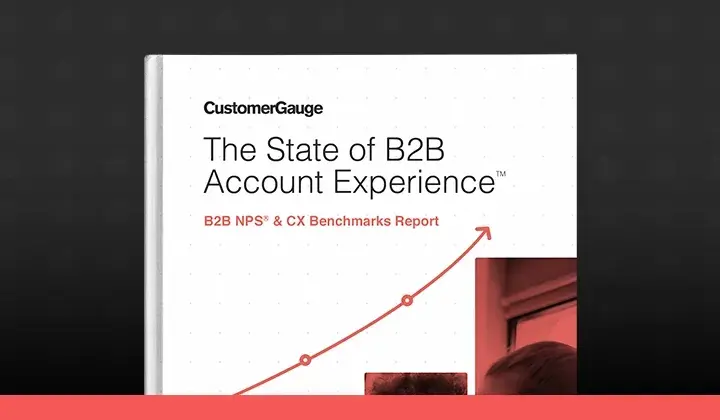Selling more to existing customers is difficult and as research by the Bridge Group shows 34% of salespeople don’t hit their targets consistently. Part of the reason is the way account managers approach the relationship they have with their customers. For many blindly focus on selling upgrades, new features or products, when actually their customer is dissatisfied and at risk of leaving.
The Account Review or Quarterly Business Review (QBR) helps change this, by shifting the focus from self-interest to a genuine customer focus to help retain customers longer and open up more certain sales opportunities. The review is a meeting where both parties come together and discuss the client’s experience and expectations with their product or service.
However, walking into an Account Review without knowing an account’s health is time-consuming and likely to create a review that is still self-interested towards the account manager. By collecting feedback from clients prior to the review, though, you know where to focus your attention and ensure that the spotlight is on your customer’s concerns. And the easiest way is to collect feedback prior to the meeting via short, easy-to-understand surveys, such as the Net Promoter® System.
Obtaining feedback creates a review based around the customer. It becomes about what your client’s employees are reporting, with the review being a space to resolve problems and set future goals.
How to do an Account Review
How exactly you construct and carry out your Account Reviews will be different for everyone. But to successfully use the collected feedback data and have a review that improves the customer’s success with your product, three things need to be considered.
- Who’s involved?
- What to discuss
- Frequency
Who’s involved?
During the Account Review, the most important contacts of the customer should be present, and it is a perfect opportunity to involve your client’s upper management. As it’s rare to get access to the C-suite and difficult to maintain, an Account Review helps by demonstrating your concern for the customer’s Return on Investment (ROI).
In a recent review by one of our clients, the CEO of their customer was surprised but delighted by the account manager’s effort to formally discuss the collected feedback. The Account Review helped this CEO understand the value of it for both parties, and he left insisting that everybody in the organization answer the survey next time around.
It's an easy way to get access to the C-suite and know just what they're thinking.
Just as important is having the correct people from within your company present at the meeting. If there were a lot of issues raised concerning customer support, you might wish to bring the Head of Customer Support to the meeting to foster direct engagement and put credibility behind your promises of improvement.
What to discuss
The primary benefit of having surveyed the stakeholders continuously is that you already know, for the most part, where everyone stands. And the collected data is the perfect ammunition to prove that you know what’s going on.
Customer feedback creates a review that avoids surprises and unexpected issues. It allows the account manager to move the relationship forward by discussing and collaborating with the customer, to find solutions to issues.
It doesn’t need to be all negative of course. The received feedback can also indicate that everyone in the account is satisfied. With a happy account, discussions about the client’s future and what can be done to help make them more successful with your product or service are possible.
With a satisfied customer, additional needs can lead to an up/cross-sell. And even when there’s no room for expansion, the Account Review creates a relationship that allows you to leverage the customer’s happiness through such things as referrals, reviews, and testimonials.
Depending on the feedback the conversation can go many different ways. However, regardless of the sentiment of feedback, some points always need to be discussed.
#1 Look at the distribution of feedback and satisfaction across the different levels of the organization (users, influencers, decision makers). As each level has its needs, it’s possible that not every level agrees about how happy they are with your service. The Account Review should raise and deal with the variations in sentiment between different organizational levels.
#2 The main drivers of satisfaction that come out of the survey should be part of the discussion. Patterns may appear for particular drivers at different levels within the account, and with this data you can dig deeper into this high-level feedback.
Frequency
How often you should do a review - be it annually, half-yearly or quarterly - depends on your resources and the type of account. It is suggested, though, that companies try to do a review with as many customers as resources allow.
For industries and businesses where there are dedicated managers for each account, an annual Account Review with each client is possible. However, in industries such as SaaS where price ranges vary, and there is a large number of customers per account manager, it is not possible nor necessary to conduct a review for each client.
For companies then that don’t have dedicated account managers, an Account Review should be carried out for your highest spending customers (the top 20%) and those that have the most growth potential.
While, for smaller accounts with less potential for growth it doesn’t make much sense to formalize the process with such a strict Account Review. However, continue to ask for feedback from all accounts, as opportunities to resolve small issues and improve their experience still exist outside of a formal review process.
The Account Review: The final piece of the puzzle
Account Reviews based on client feedback create a relationship where the focus is the voice of the customer and not new sales. Shifting the focus opens up new opportunities for companies to: secure their revenue stream by retaining dissatisfied customers, turn those customers into loyal long-lasting ones, and sell them products they need and want.
To be as successful as possible, remember the following:
- Consider the frequency of the Account Review. Meet more frequently with at-risk accounts and less with satisfied ones.
- Who is coming to the Account review (from both sides)? Push for decision makers to be present!
- Discuss problems, solutions and make plans for the future.
- The data is not uniform. Make sure to address the concerns and drivers of satisfaction for different organizational levels.


